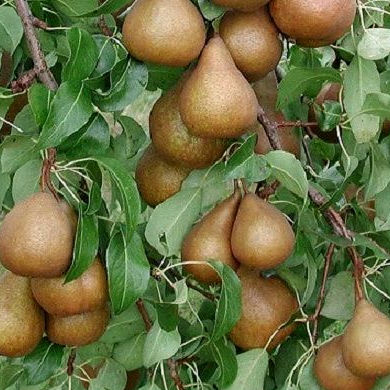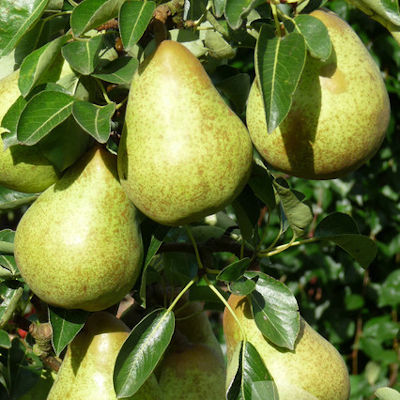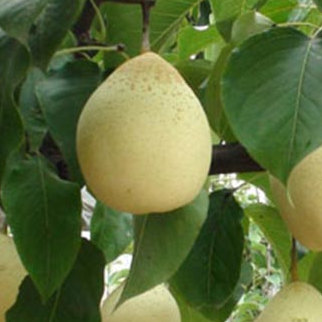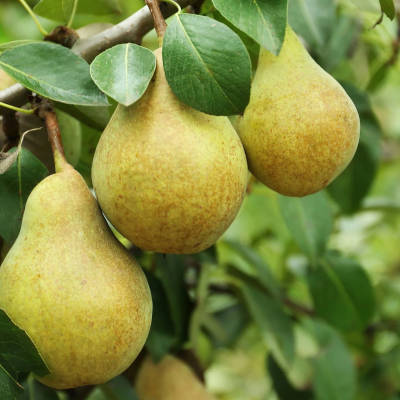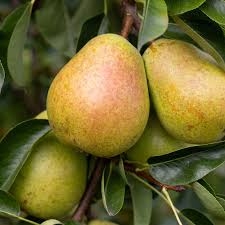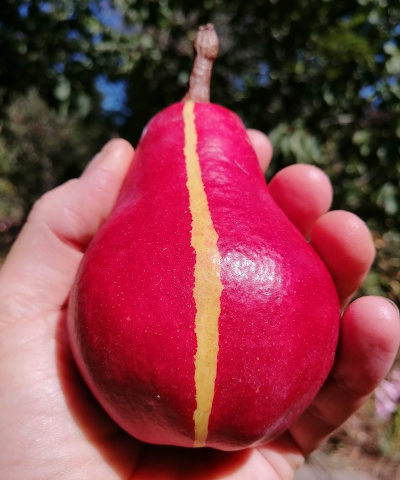Pear (Pyrus communis)
Common name
Pear
Botanical name
Pyrus communis
Family
Rosaceae
Forest layer
low-tree
Height (m)
13
Flowers
White
Edible
Fruit / berries
Shade / Sun
Full sun - part shade
Soil type
Free draining
Wind tolerance
Moderate
Propagation method
Graft
Related
Pear - Beurre Hardy QC
Details
Medium to large, yellow with cinnamon russet. Smooth, melting, buttery and very juicy. Rich aromatic flavour. Vigorous, healthy tree, quite hardy. Regular heavy crops in a warm location.
Used as grafting interstem on quince roots
Used as grafting interstem on quince roots
Common name
Pear - Beurre Hardy QC
Botanical name
Pyrus communis sativa
Family
Rosaceae
Height (m)
4.0
Edible
Drought tolerance
Date
August 06, 2013
Shade / Sun
Semi shade, Full sun
Soil type
Moist
Related
Pear - Beurre Hardy scion / bud wood
Botanical name
Pyrus
Rootstock
Quince (dwarfing), Pear
Details
Medium to large, yellow with cinnamon russet. Smooth, melting, buttery and very juicy. Rich aromatic flavour. Vigorous, healthy tree, quite hardy. Regular heavy crops in a warm location.
Beurre Hardy is in flowering group 4 and is not self-fertile so needs a pollination partner of a different variety nearby. Pollinate with Clapp's Favorite, Conference, Nashi Hosui, Williams' bon chrétien
One of the few pear cultivars compatible with quince rootstock and therefore suitable for creating dwarf pear trees.
Beurre Hardy is in flowering group 4 and is not self-fertile so needs a pollination partner of a different variety nearby. Pollinate with Clapp's Favorite, Conference, Nashi Hosui, Williams' bon chrétien
One of the few pear cultivars compatible with quince rootstock and therefore suitable for creating dwarf pear trees.
Price
$3.90
each
Price for 2 or more
$3.50
each if you buy 2 or more
Pear - Williams Bon Chretien scion / bud wood
Details
The Williams Bon Chretien pear, also known as the Williams pear or Bartlett pear in North America, is a popular and well-known variety of pear. Large long necked, green-yellow fruit, that is ideal for eating and bottling. Early season, fruit will naturally fall in February and will keep up to 3 months. Good pollinator.
Pollinators include - Beurre Bosc, Doyenne du Comice, Taylors Gold, Winter Cole, Winter Nelis, Nashi Hosui and Nashi Nijiseiki.
Pollinators include - Beurre Bosc, Doyenne du Comice, Taylors Gold, Winter Cole, Winter Nelis, Nashi Hosui and Nashi Nijiseiki.
Price
$3.90
each
Price for 2 or more
$3.50
each if you buy 2 or more
Propagation method
Graft
Pear - Ya scion / bud wood
Botanical name
Pyrus bretschneideri
Rootstock
Pear, Quince with interstock
Variety
Chinese white pear
Details
This Asian pear originated in China but is now grown in various regions around the world.
Price
$3.90
each
Price for 2 or more
$3.50
each if you buy 2 or more
Pear - Doyenne du Comice scion / bud wood
Details
Large classic variety of dessert pear, bearing delicious pears in mid-to late autumn. Green skin flushed red with white, melting juicy flesh of rich flavour. Tastes like sweetened cinnamon. Mid to late season. Upright and vigorous habit. High chilling hours needed to set fruit.As most pears need cross pollination, the planting of more than one variety is recommended or the growing of a double grafted tree. Pollinators include - Beurre Bosc, Williams bon Cretien, Winter Cole, Winter Nelis, Nashi Hosui and Nashi Nijiseiki.
Price
$3.90
each
Price for 2 or more
$3.50
each if you buy 2 or more
Propagation method
Graft
Pear - Louise Bonne of Jersey scion / bud wood
Details
Smaller pears with thin skin and soft flesh. Red blush on the skin.Louise Bonne of Jersey is not self-fertile and needs a pollination partner of a different variety nearby. Pollination partners - Packham's Triumph, Conference
Price
$3.90
each
Price for 2 or more
$3.50
each if you buy 2 or more
Propagation method
Graft

